Maps of Ireland
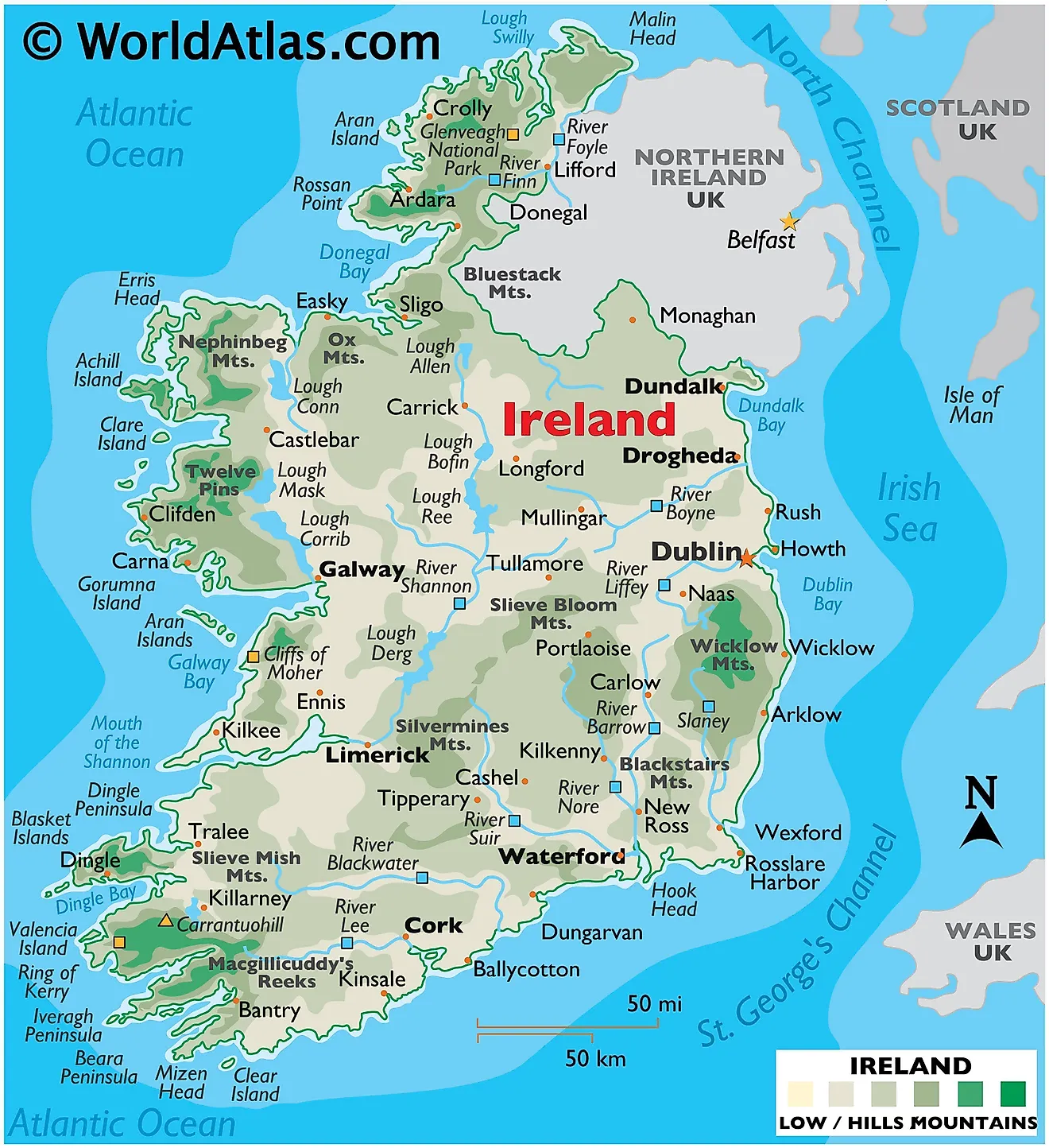
The Republic of Ireland, or simply Ireland, is a Western European country located on the island of Ireland. It shares its only land border with Northern Ireland, a constituent country of the United Kingdom, to the north. To the east, it borders the Irish Sea, which connects to the Atlantic Ocean. The Atlantic Ocean surrounds the western and southern coasts of Ireland, and the warm North Atlantic Drift, a major component of the Gulf Stream, is particularly influential on the climate of Ireland. The country's total area is approximately 70,273 km2 (27,133 mi2).
The Irish landscape generally consists of four geographical regions, several bodies of water and rivers, as well as islands.
The Central Lowlands encompass most of the interior of the country. Dominated by a series of flat plains and low-lying areas, the Central Lowlands feature numerous lakes and peat bogs, which give the region its distinct characteristics. The peatlands constitute roughly 20% of the country's landmass. Over the years, peat extraction and combustion have been ingrained in Irish traditions, but growing climate considerations are prompting a rethink on the stewardship of these peatlands.
The Western Coastal area lies to the west of the Central Lowlands. This coast is a region marked by rugged landscapes. It includes the western coastal counties and is characterized by steep cliffs, rocky outcrops, and isolated peninsulas that extend into the Atlantic Ocean. This area contains the Cliffs of Moher, a notable geological feature that stretches for about 14 kilometers along the coastline of County Clare. The west is also home to many of Ireland's Gaeltacht areas, where the Irish language is still spoken. Last, Carrauntoohil is the country's highest point in this region and it stands at 1041 m (3414 ft). The yellow upright triangle marks its position on the map.
The Eastern and Southern Coastal area sits to the east and south of the Central Lowlands, one encounters the Eastern and Southern Coastal area, a region marked by gentler landscapes compared to the west. Rolling hills, fertile valleys, and sandy beaches typify this region. The east coast, in particular, features the Wicklow Mountains, which provide a striking backdrop to Ireland's capital city, Dublin.
The Northern Uplands, which straddle the border with Northern Ireland, form another distinct region. This area is characterized by hills and mountains, including the Mourne Mountains and the Sperrin Mountains. Although less populated than other regions, the Northern Uplands hold significant environmental and cultural value.
Bodies of Water: The country hosts several large lakes, locally known as loughs. Lough Corrib and Lough Ree, both located in the Central Lowlands, are among the largest.
Numerous rivers crisscross Ireland. The River Shannon, the longest river in Ireland, flows south from the slopes of Cuilcagh Mountain in the Northern Uplands, through the Central Lowlands, and into the Atlantic Ocean. Other major rivers include the River Liffey, which flows through the heart of Dublin, and the River Boyne.
Islands: The Aran Islands, located off the west coast, are notable for their limestone landscapes. Other prominent islands include Achill Island, the largest island off the coast of Ireland, and the Skellig Islands, a UNESCO World Heritage Site.
County Councils of Ireland Map
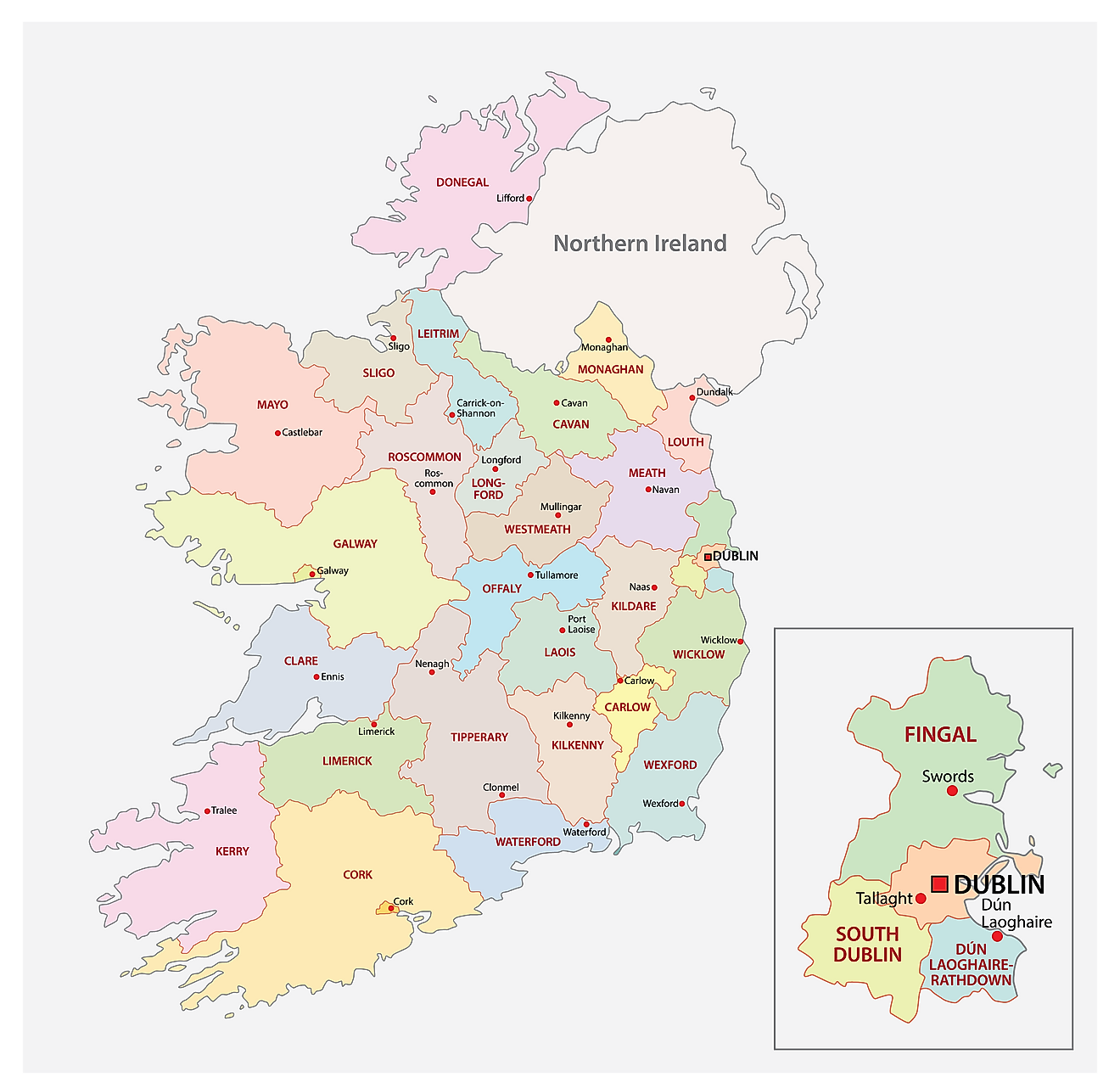
Ireland (officially, the Republic of Ireland) is divided into 26 county councils, 3 city councils, 2 city & county councils.
The county councils are: Carlow, Dun Laoghaire Rathdown, Fingal, South Dublin, Kildare, Kilkenny, Laois, Longford, Louth, Meath, Offaly, Westmeath, Wexford, Wicklow, Clare, Cork, Kerry, Tipperary, Galway, Leitrium, Mayo, Roscommon, Sligo, Cavan, Donegal and Monaghan.
The city councils are: Dublin city council, Cork city council and Galway city council.
The city and county councils are: Limerick city and county council, Waterford city and county council.
Located in the eastern part of the country is, Dublin – the capital, the largest and the most populous city in Ireland. It is also the major cultural, financial, commercial center and the chief maritime port of Ireland.
Where is Ireland?
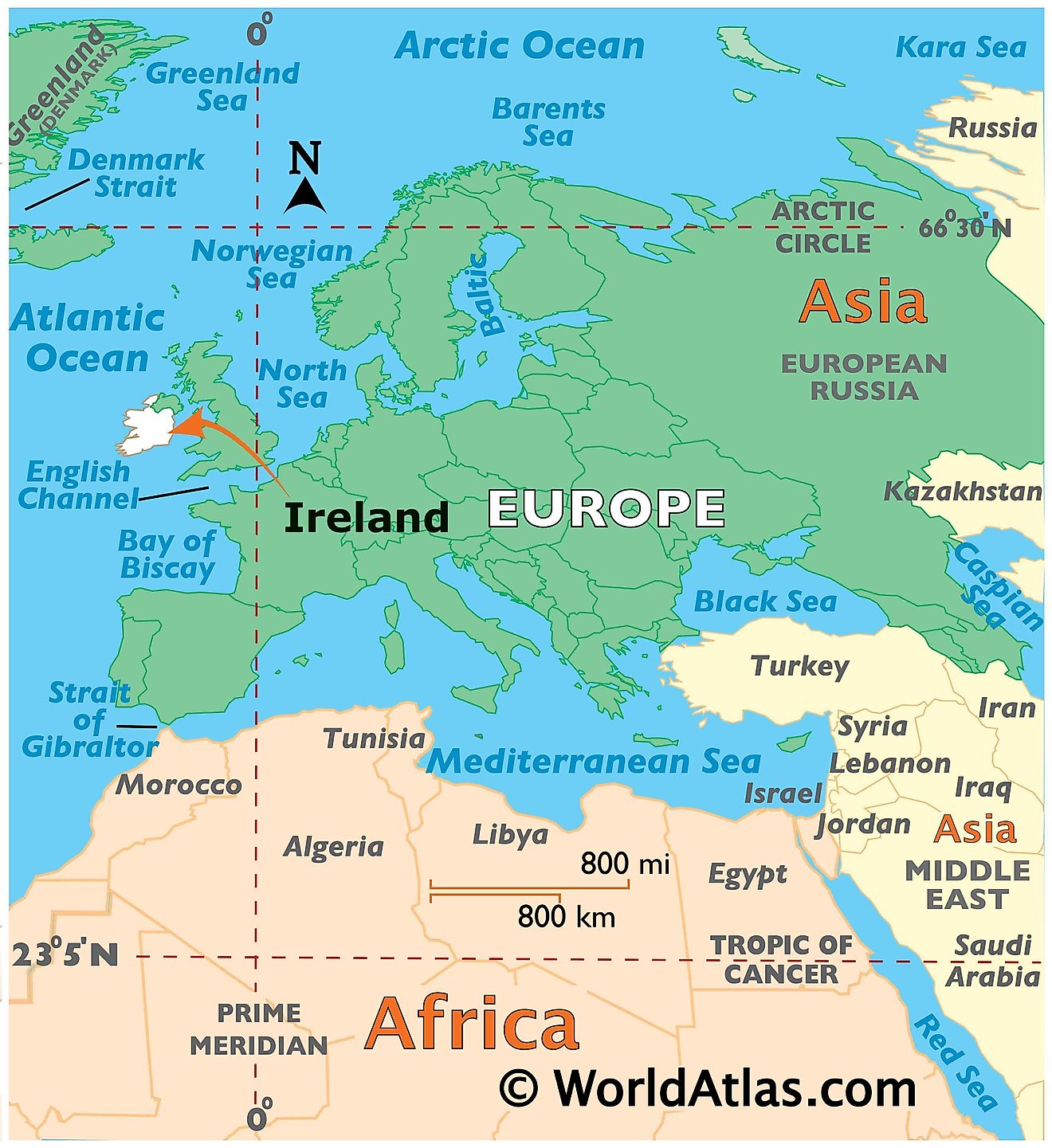
Ireland is located off the north western coastline of continental Europe. It is geographically positioned both in the Northern and Western hemispheres of the Earth. Ireland is the 2nd largest island of the British Isles and lies in the west of Great Britain. It shares a land border with Northern Ireland (a recognised constitutionally distinct region of UK). Ireland is bounded by the Atlantic Ocean – by the Celtic Sea in the south; by the St. George’s Channel in the southeast and by the Irish Sea in the east.
Ireland Bordering Countries: The United Kingdom.
Regional Maps: Map of Europe
Outline Map of Ireland
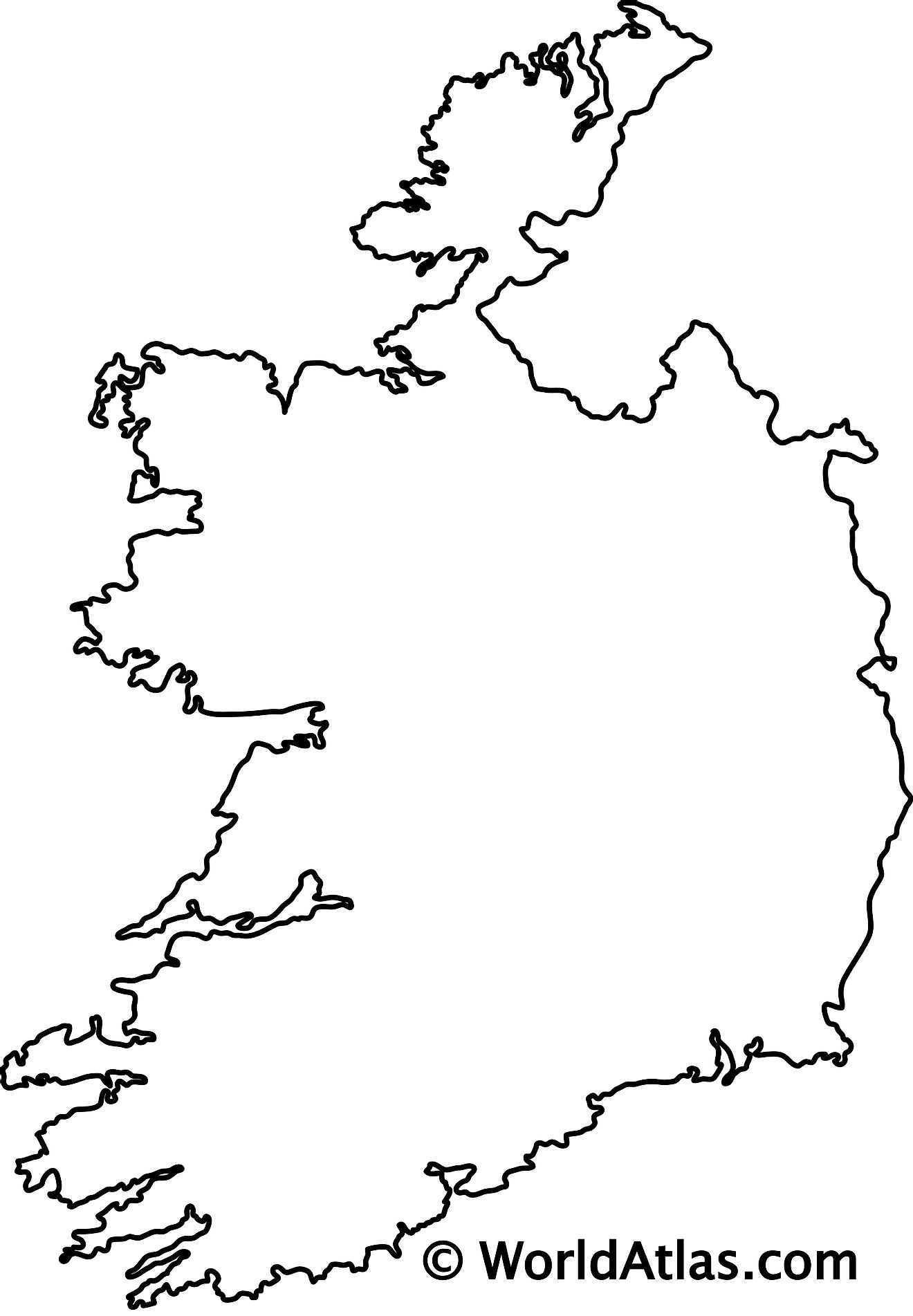
The above blank map represents the Republic of Ireland, a country located off the north western coastline of European continent. The above map can be downloaded, printed and used for educational purposes like coloring and map-pointing activities.
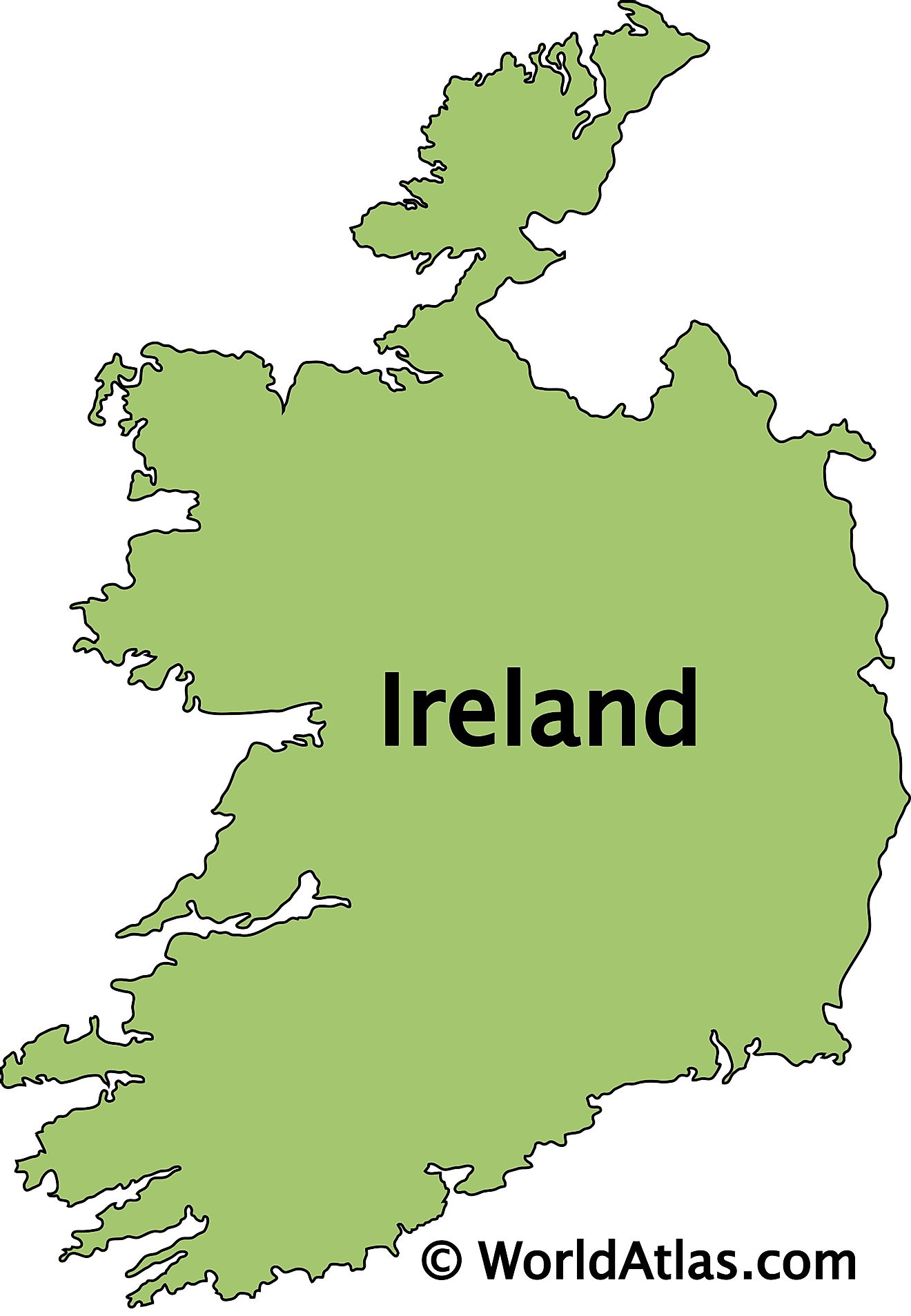
The above outline map represents the Republic of Ireland, a sovereign country on the island of Ireland. It is the second largest island of the British Isles and lies to the west of Great Britain.
Key Facts
| Legal Name | Ireland |
|---|---|
| Flag |
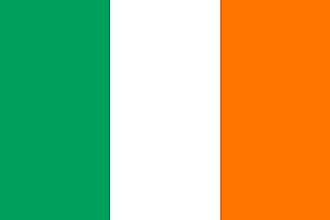
|
| Capital City | Dublin |
| 53 19 N, 6 14 W | |
| Total Area | 70,273.00 km2 |
| Land Area | 68,883.00 km2 |
| Water Area | 1,390.00 km2 |
| Population | 4,941,444 |
| Largest City |
Dublin (1,270,172) |
| Currency | Euros (EUR) |
| GDP | $388.70 Billion |
| GDP Per Capita | $78,660.96 |
This page was last updated on August 1, 2023











